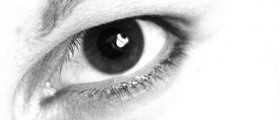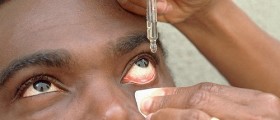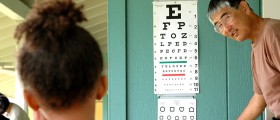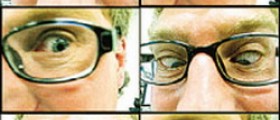
Near-sightedness is also called myopia, and it is inability to clearly see objects that are too far away. Myopia is essentially refractive error, and refractive eye disorder can be treated in various ways. Causes of myopia are unknown, but hereditary factor is suspected. Symptoms of myopia are out of focus or blurred objects that become clear when been brought closer to the eye.
Myopia is usually corrected with contact lenses or glasses, and in some cases with corrective surgery. But, there are alternative treatments, like homeopathy. Besides homeopathic remedies, certain relaxation techniques and eye exercises are also recommended, like Bates method, which aims in strengthening the eye muscles.
Homeopathic remedies for Myopia
There are many homeopathic remedies used to treat myopia, among them Physostigma 30, which is used in cases on increased myopia. Other remedies are Belladonna, which is one of most commonly used in homeopathic treatments of myopia and Rhus Toxicodendron and Phos 30.
Another of the homeopathic remedies used in myopia treatments is Ulium tigrinum, which is very useful in cases of astigmatism, impaired vision and lachrymation. It has the ability to restore weal ciliary muscle. Agarius muscarius and Carboneum Sulphuratum are used for cases of nearsightedness.
Symptoms that indicates need for use of Carboneum Sulphuratum are myopia accompanied with atrophy of optic disc, congested arteries and veins, retinal congestion, foggy and impaired vision and centrol scotoma that receives green and red light but not a white one.
Agaricus muscarius is a homeopathic remedy also recommended for cases of nearsightedness, when some of the symptoms include difficulty to read.
Ruta Graveolens is commonly used remedy in cases of nearsightedness and eye strain followed by headache, pain in the eyes while reading, feeling of pressure in the eyebrows and disturbance of accommodation.
Viola Odorata is remedy recommended fro children with symptoms like pain above the eyebrows, compressed eyeballs or headache across the forehead.
Euphrasia is often used in cases of catarrhal eyes, accompanied with feeling of pressure on the eyes, frequent inclination to blink and watery eyes.
Physostigma is homeopathic remedy recommended for cases of myopia or near sightedness, when symptoms of it includes inability to raise eyelids, night blindness, photophobia, twitching of ocular muscles, contraction of pupils, partial blindness, astigmatism, glaucoma, spasms of ciliary muscle and increasing myopia.
Lilium Tigrinum is remedy often used in cases of myopic astigmia and impaired vision. Dosages recommended in those cases are higher, and it sometimes takes a while before this remedy starts to affect the troubled eyes.

















Your thoughts on this
Loading...